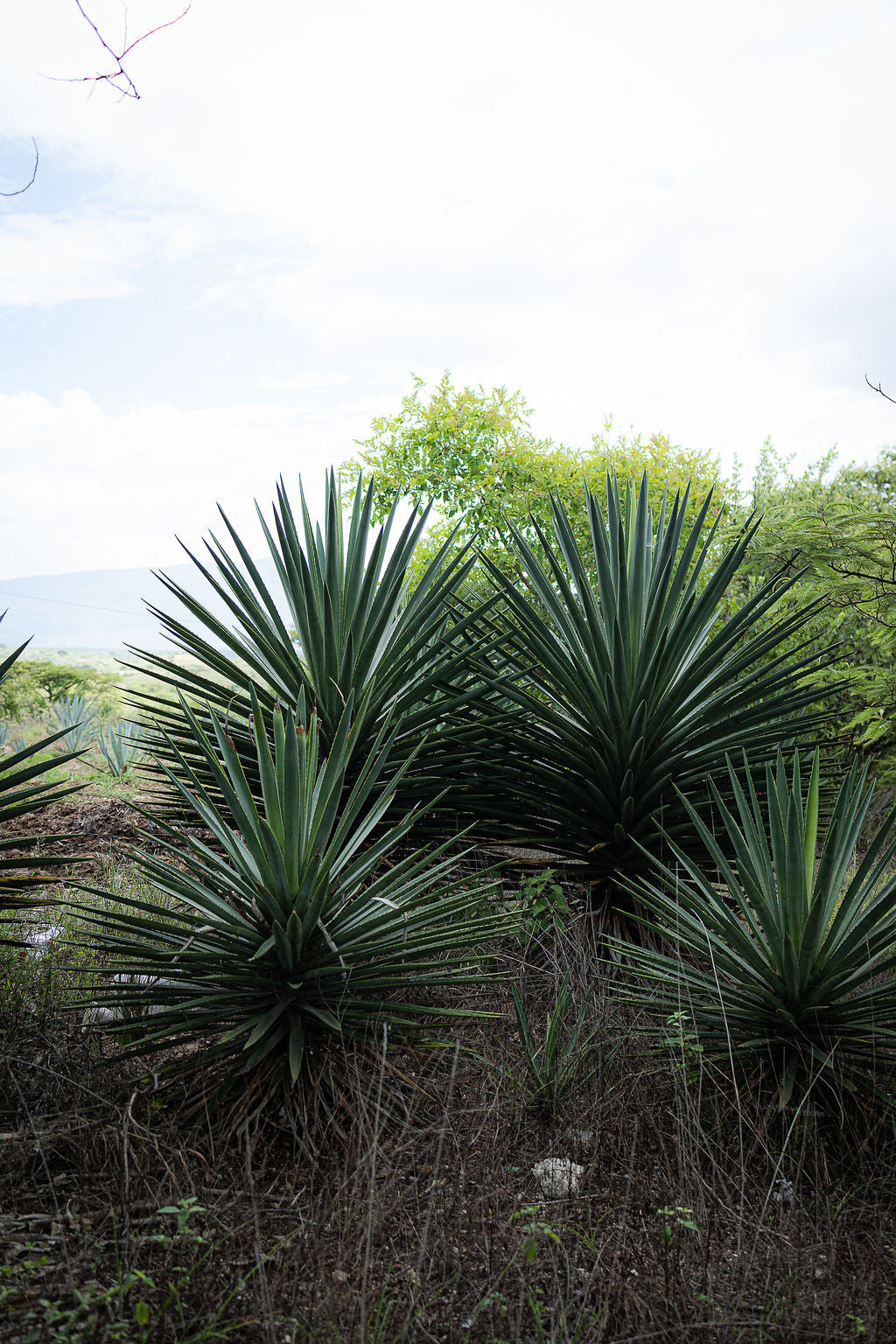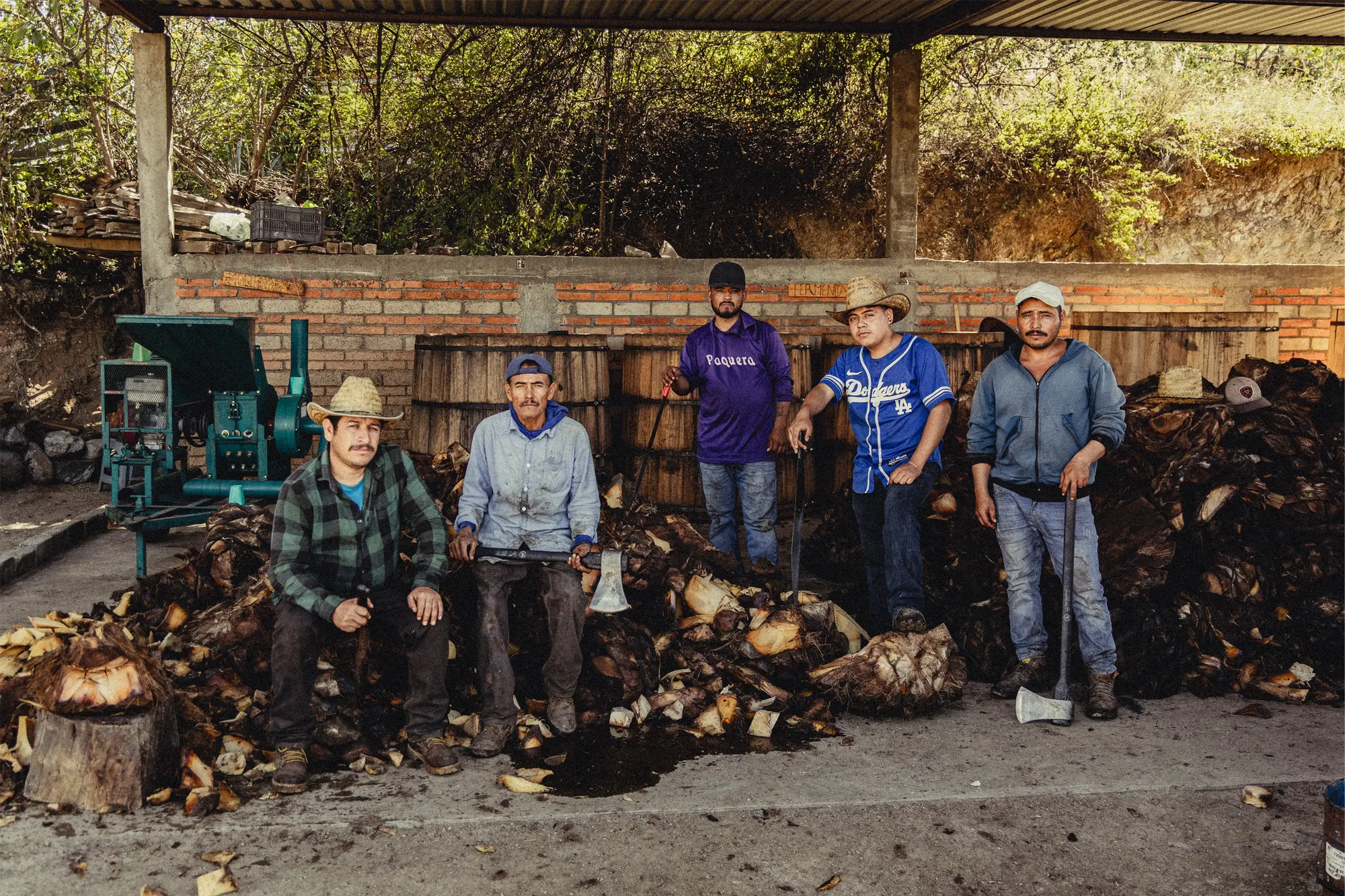

We Love the Barril Agave & you should too: A Gem in the Karwinskii Family
In the vast world of mezcal, few agaves captivate connoisseurs as much as the Barril agave, a unique member of the Karwinskii family. Renowned for its wild nature, complex flavors, and artisanal appeal, Barril embodies the essence of traditional Oaxacan mezcal-making.
Where Does Barril Come From?
Scientifically classified as Agave karwinskii, Barril agave is native to the central valleys and southern mountainous regions of Oaxaca. It thrives in rugged hillsides and rocky soils, often in semi-arid microclimates that contribute to its resilience. Unlike cultivated agaves, Barril is typically found growing wild, adding to its allure and rarity.
Growth and Maturity
One of the defining characteristics of Barril is its slow maturation process. This agave requires an impressive 12 to 18 years to reach full maturity, a testament to its tenacity and the meticulous care of mezcaleros who work with it. The plant grows in a vertical, narrow shape, with a tall, cylindrical piña that resembles a barrel, hence its name. This elongated growth cycle concentrates sugars, intensifying the agave’s flavor profile. Paquera is honored to help maestro mezcalero’s invest and maintain health sustainable practices and replanting initiatives.

Harvesting Practices We Live By
Harvesting Barril is an art form in itself. Due to its wild nature and often remote locations, mezcaleros must embark on arduous treks into the hills, sometimes relying on mules to transport the piñas back to our palenques. The pencas (leaves) are meticulously trimmed to reveal the dense core, and timing the harvest is crucial. We try to cut our pencas a bit closer to the piña to ensure we are capturing as much sugar as possible. A premature cut can result in underdeveloped sugars, while waiting too long increases the risk of rot or predation. We wait for our Barril agaves to reach Capon, which is when the quiote begins to form. This is when the piña has the highest concentration of sugars ensuring it will yield the best quality of mezcal.
Production Methods
Once harvested, Paquera’s piñas undergo a traditional roasting process in earthen pits with hot stones in the middle, cooking the agaves evenly to ensure it maintains it unique flavor. After several days of roasting, the softened agave is crushed using a tahona (stone wheel) or wooden mallet. Fermentation typically takes place in open-air wooden vats, utilizing wild yeasts, while distillation is conducted in copper or clay pot stills, depending on whether the production is ancestral or artesanal.
Why Barril is Considered Wild?
Barril is often referred to as a wild agave because it naturally grows without human cultivation. While some small-scale nurseries may propagate it today, a significant portion of the Barril used in mezcal is still foraged from wild populations. This scarcity and biodiversity importance have prompted some producers to adopt sustainable harvesting practices.
What Makes Barril So Special?
What truly sets Barril apart is its unique flavor profile. Mezcal made from Barril often exhibits bright vegetal notes, earthy minerality, and a delicate smokiness. It has a soft, refined mouthfeel with complex layers that unfold on the palate, ranging from green herbs and citrus to light pepper and floral tones. Compared to other agaves like Espadín or Tobalá, Barril offers a more subtle yet deeply expressive experience.

In the realm of mezcal, Barril agave stands as a wild, slow-growing treasure that demands patience and respect. Its production embodies the essence of traditional Oaxacan craftsmanship, and each sip carries a story rooted in the rugged terrains and time-honored practices of Mexico’s mezcaleros.
#barrilagave #barril #mezcal #paqueramezcal #agavespirits #agave


